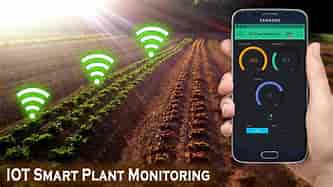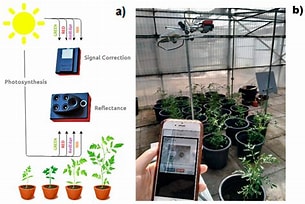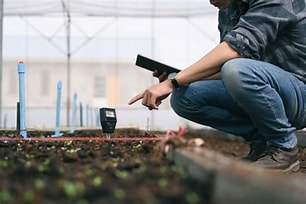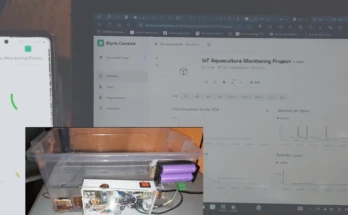Introduction
Imagine walking through a lush green field, where every plant is thriving, and every leaf is bursting with life. Now, picture having the ability to monitor each of those plants in real-time, understanding their growth stages, health, and needs without even stepping into the field. This is the magic of smart sensors in agriculture. As we dive into the 21st century, technology continues to reshape how we approach farming, and smart sensors are at the forefront of this transformation. In this article, we’ll explore how these innovative devices monitor plant growth stages in real-time, enhancing agricultural practices and promoting sustainability.
Understanding Smart Sensors
What Are Smart Sensors?
Smart sensors are advanced devices that collect data from their surroundings and provide insights through real-time analysis. In agriculture, these sensors can measure various environmental factors such as temperature, humidity, soil moisture, and light levels. By integrating with IoT (Internet of Things) technology, they can communicate this data to farmers instantly.
The Importance of Real-Time Monitoring
Real-time monitoring allows farmers to make informed decisions quickly. Instead of waiting for periodic assessments or relying on guesswork, they can respond immediately to changing conditions. This proactive approach helps optimize crop yields and resource use while minimizing waste.

The Role of Smart Sensors in Plant Growth Monitoring
1. Soil Moisture Sensors
How They Work
Soil moisture sensors measure the water content in the soil. They typically use capacitive or resistive methods to determine moisture levels and send this data to farmers via mobile apps or dashboards.
Benefits of Soil Moisture Monitoring
- Water Conservation: By knowing when to irrigate, farmers can conserve water and reduce costs.
- Optimal Growth Conditions: Ensuring plants receive the right amount of water promotes healthy growth.
2. Temperature and Humidity Sensors
Understanding Plant Needs
Temperature and humidity significantly affect plant growth. These sensors track environmental conditions, providing critical data that helps farmers maintain optimal growing environments.
Impact on Crop Yield
- Disease Prevention: Monitoring temperature and humidity can help prevent conditions that lead to plant diseases.
- Growth Optimization: Keeping plants within their ideal temperature range ensures maximum photosynthesis and growth rates.

3. Light Sensors
Measuring Light Levels
Light sensors gauge the intensity of sunlight reaching plants. This information is crucial for understanding how much light crops are receiving throughout the day.
Benefits of Light Monitoring
- Growth Regulation: Ensures plants receive adequate light for photosynthesis.
- Energy Efficiency: Helps farmers optimize artificial lighting in greenhouses or indoor farms.
Integrating Smart Sensors with Data Analytics
The Power of Data Analysis
Collecting data is just the first step; analyzing that data is where the real magic happens. Smart sensors feed information into analytics platforms that interpret the data and provide actionable insights.
Predictive Analytics for Better Decision-Making
By leveraging historical data alongside real-time inputs from smart sensors, predictive analytics can forecast future conditions. For instance:
- Irrigation Needs: Predict when crops will require watering based on weather forecasts and current soil moisture levels.
- Growth Projections: Estimate when crops will reach maturity based on current growth rates.
The Benefits of Using Smart Sensors in Agriculture
1. Increased Efficiency
Smart sensors allow for precise monitoring of plant growth stages, enabling farmers to allocate resources more effectively. Instead of applying fertilizers or pesticides broadly, they can target specific areas based on sensor data.
2. Enhanced Crop Yields
With real-time insights into plant health and environmental conditions, farmers can make timely interventions that promote optimal growth conditions—ultimately leading to higher crop yields.
3. Sustainability
By optimizing resource use—such as water and fertilizers—smart sensors contribute to more sustainable farming practices. This not only benefits the environment but also helps reduce operational costs for farmers.

Challenges in Implementing Smart Sensor Technology
1. Initial Costs
While smart sensors offer numerous benefits, the initial investment can be a barrier for some farmers, especially small-scale operations. However, as technology advances, prices are gradually decreasing.
2. Technical Knowledge
Farmers may need training to effectively use smart sensor technology and interpret the data provided. Bridging this knowledge gap is essential for maximizing the benefits of these systems.
3. Data Management
With vast amounts of data generated by smart sensors, managing this information can be challenging. Farmers need efficient systems to store and analyze data without becoming overwhelmed.
Future Trends in Smart Sensor Technology
1. Integration with AI
The future holds exciting possibilities as smart sensors increasingly integrate with artificial intelligence (AI). AI algorithms can analyze sensor data more efficiently, offering deeper insights into plant health and growth stages.
2. Enhanced Connectivity
As IoT technology continues to evolve, smart sensors will become even more interconnected. This enhanced connectivity will allow for seamless communication between devices and platforms, leading to more comprehensive monitoring systems.
3. Customization
Future advancements may lead to more customizable sensor solutions tailored to specific crops or farming practices. This level of personalization will further enhance efficiency and effectiveness in monitoring plant growth stages.
Real-World Applications of Smart Sensors
Case Study: Precision Agriculture
Farmers using precision agriculture techniques have successfully implemented smart sensors to monitor their fields closely. For example:
- Corn Farming: A corn farmer utilized soil moisture sensors alongside weather forecasts to optimize irrigation schedules—resulting in a significant reduction in water usage while maintaining high yields.
- Greenhouse Operations: A greenhouse operator employed temperature and humidity sensors to maintain ideal growing conditions for delicate plants like orchids—leading to healthier blooms and increased sales.
Conclusion
Smart sensors are revolutionizing how we monitor plant growth stages in real-time, offering farmers unprecedented insights into their crops’ health and needs. By integrating these technologies into agricultural practices, we can enhance efficiency, increase yields, and promote sustainability in farming operations worldwide. As we look toward the future, embracing smart sensor technology will be crucial for meeting the challenges of modern agriculture while ensuring a thriving planet for generations to come.
FAQs About Smart Sensors in Agriculture
1: What types of smart sensors are used in agriculture?
Smart sensors commonly used in agriculture include soil moisture sensors, temperature and humidity sensors, light sensors, and nutrient sensors.
2: How do smart sensors improve irrigation practices?
Smart sensors provide real-time data on soil moisture levels, allowing farmers to irrigate only when necessary—leading to water conservation and healthier crops.
3: Can smart sensors help prevent plant diseases?
Yes! By monitoring environmental conditions such as temperature and humidity, smart sensors can help identify conditions conducive to disease development early on.
4: What is IoT technology in agriculture?
IoT (Internet of Things) technology refers to interconnected devices that communicate with each other via the internet—enabling real-time monitoring and data sharing among agricultural tools like smart sensors.
5: Are smart sensors cost-effective for small-scale farmers?
While initial costs may be higher than traditional methods, many small-scale farmers find that the long-term benefits—such as increased efficiency and reduced resource use—make smart sensor technology a worthwhile investment.


